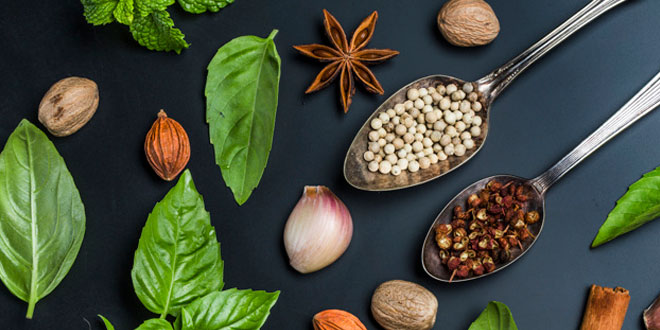Question: What is Nutrients?
Answer: Food is essential for all living organisms. Carbohydrates, proteins, fats, vitamins and minerals are components of food. The chemical substance present in components of food is necessary for our body and is called nutrients.
Question: How humans and animals are are directly or indirectly dependent on plants.
Answer: All living organisms require food. Plants can make their food themselves but animals including humans cannot. They get it from plants or animals that eat plants. Thus, humans and animals are directly or indirectly dependent on plants.
Question: Difference between a parasite and saprotroph.
Answer: The difference is as follows:
Question: Give a brief description of the process of synthesis of food in green plants.
Answer: The process by which the green plants synthesize their own food in the presence of sunlight and chlorophyll by taking carbon dioxide from the atmosphere and water from the soil is known as photosynthesis. Green plants require four things to prepare their own food. These are :
- Carbon dioxide, absorbed from the atmosphere through stomata present on the leaf surface.
- Water, absorbed from the soil, through the root system.
- Chlorophyll, present in the leaf.
- Light, coming from the sun. During photosynthesis, food is synthesized. Oxygen is released in the process.
Question: What is autotrophic nutrition?
Answer: The mode of nutrition where an organism makes its own food by taking in simple substances present in their surroundings is called autotrophic nutrition.
Question: What is heterotrophic nutrition?
Answer: The mode of nutrition in which organisms cannot prepare their food and depend on other plants and animals is called heterotrophic nutrition.
Question: What is the mode of nutrition in plants?
Answer: The mode of nutrition in plants is autotrophic .
Question: What is the mode of nutrition of human and other animals?
Answer: Heterotrophic.
Question: What are the food factories of plants?
Answer: Leaves are the food factories of plants.
Question: Define photosynthesis.
Answer: The process by which green plants prepare their food using carbon dioxide and water in the presence of sunlight and chlorophyll is called photosynthesis.
Question: what is chlorophyll?
Answer: A green pigment presents in the leaves of green plants that traps sunlight is called chlorophyll.
Question: What is the function of chlorophyll?
Answer: Chlorophyll captures the energy of sunlight.
Question: What are stomata?
Answer: Minute openings present mostly on the under surface of leaves are called stomata.
Question: What are the raw materials for photosynthesis?
Answer: 1. Water, 2. Carbon dioxide, 3. Chlorophyll, 4. Sunlight.
Question: What are the end products of photosynthesis?
Answer: Carbohydrates(glucouse) and oxygen.
Question: What is the mode of nutrition of cuscuta?
Answer: Parasitic.
Question: What are insectivorous plants?
Answer: The plants which trap insects and digest them to get nitrogenous food are called insectivorous plants.
Question: Give an example of insectivorous plant.
Answer: Pitcher plant and Venus flytrap.
Question: What are saprophytic plats?
Answer: Saprophytic plants are non – green plants that derive their nutrients from dead and decaying organic matter.
Question: Give to examples of saprophytic plants.
Answer: Bread mould and mushroom are examples of saprophytic plants.
Question: What are parasitic plants?
Answer: parasitic plants are plant that obtain their nutrients plants from other plants.
Question: What is symbiosis?
Answer: The association between plants which mutually benefit each other is called symbiosis.
Question: Give an example of symbiotic relationship?
Answer: Lichens (relationship between an algae and fungus).
Question: What type of plants do use in the experiment to prove that chlorophyll is necessary for photosynthesis?
Answer: Destarched potted plants with variegated leaves, e.g. croton, money plants.
Question: Name the bacteria which converts atmospheric nitrogen into a soluble form.
Answer: Rhizobium bacteria.
Question: Where dose rhizobium bacteria live?
Answer: They live in the roots of legumes such as gram, peas and other pulses.
Question: Name the form in which carbohydrates are stored in the plants?
Answer: Starch.
Question: Which gas is released during photosynthesis?
Answer: Oxygen.
Question: Name one plant each showing the following modes of nutrition : (a) Saprophytic, (b) Parasitic, (c) Insectivorous, (d) Symbiotic.
Answer: (a) Saprophytic – Mushrooms
(b) Parasitic – Cuscuta
(c) Insectivorous – Pitcher
(d) Symbiotic – Lichens
 Class Notes NCERT Solutions for CBSE Students
Class Notes NCERT Solutions for CBSE Students



It was a nice experience